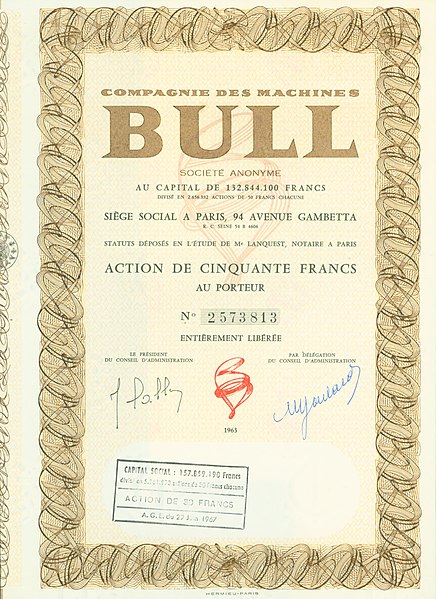Bull SAS is a French computer company headquartered in Les Clayes-sous-Bois, in the western suburbs of Paris. The company has also been known at various times as Bull General Electric, Honeywell Bull, CII Honeywell Bull, and Bull HN. Bull was founded in 1931, as H.W. Egli - Bull, to capitalize on the punched card technology patents of Norwegian engineer Fredrik Rosing Bull (1882–1925). After a reorganization in 1933, with new owners coming in, the name was changed to Compagnie des Machines Bull (CMB). Bull has a worldwide presence in more than 100 countries and is particularly active in the defense, finance, health care, manufacturing, public, and telecommunication sectors.
Share of the Compagnie des Machines Bull S. A., issued 1963
A punched card is a piece of card stock that stores digital data using punched holes. Punched cards were once common in data processing and the control of automated machines.
A 12-row/80-column IBM punched card from the mid-twentieth century
Close-up of a Jacquard loom's chain, constructed using 8 × 26 hole punched cards
Carpet loom with Jacquard apparatus by Carl Engel, around 1860. Chain feed is on the left.
Woman operating the card puncher, c.1940





